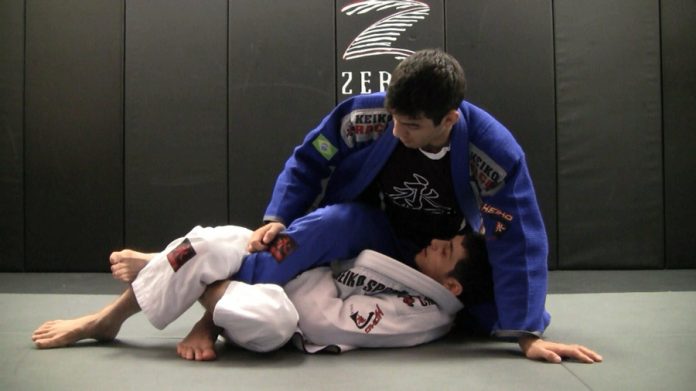
The BJJ deep half guard is a position that many of the most successful competitors use on a regular basis. It keeps the bottom person in complete control of what is going on in the match. It can slow down even the most agile of grapplers, and it is a position to sweep virtually anybody. You can see why lots of world champions have the tendency to go for the BJJ deep half guard whenever possible. And not just world champions, but more and more competitors of all levels seem to gravitate towards this position. Which makes passing it a real problem.
To say that passing the BJJ deep half guard is an easy task would be a lie. It is a guard that’s going to take a lot of careful maneuvering and precise details. If you get even the slightest detail wrong, you’ll be flying faster than you can realize what’s going on. Passing the deep half requires you to discover exactly where your balance is and how to keep adjusting it until you win the structured game. One thing to remember is that, while the BJJ deep half guard is a dangerous position, once you manage to establish a few key elements, you’ll render it useless pretty quick. However, given its dynamic nature, it is easy for an opponent to get you back, so any passes or counterattacks need to be fast and deliberate.
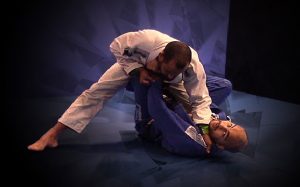
Speaking of world champions that excel in the deep half guard position, Bernardo Faria is a 5 times world champion whose deep half game is second to none! His “Battle Tested Half Guard” DVD set features the deep half heavily, including some passing principles. It is the ultimate guide to the deep half guard position by far!
BJJ Deep Half Guard Trouble
The BJJ deep half guard presents a very difficult puzzle to solve because of two main issues. The first is the fact that your opponent has what is the ultimate Jiu-Jitsu position – underneath your center of gravity. Furthermore, they have incredible dynamic control over your base thanks to the leg lever. Let’s look at both these problems deeper.
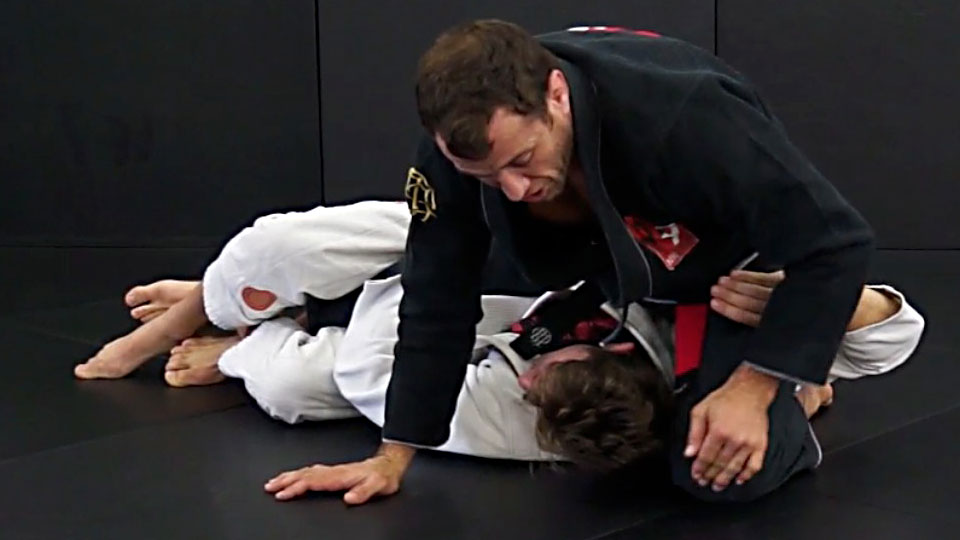
As if that’s not enough, the position offers incredible control over both your hips. The reason for this is that from the deep half position, your opponent has direct control over one of your legs. It includes controlling the lower part of the leg with their feet, and the upper with their arms. Moreover, they can control the other hip directly with one of their arms. As long as the opponent has the correct grips, you won’t be able to move an inch without giving away a sweep or transition. What’s worse is is that the opponent doesn’t have to wait for you, but can create Kuzushi at any time.
Position Zero
In accordance with the two main issues the BJJ deep half guard presents, you’ll have two specific tasks from the top as well. Your first task is to stabilize your position. Your second task is to neutralize the opponent’s possibilities. Once you’re able to achieve them, you can start thinking about passing, or getting into a superior position.
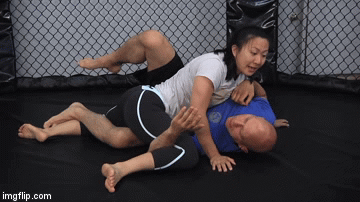
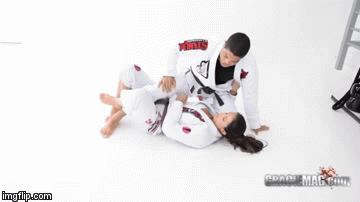
Sweep Prevention
Out of the many sweeps available form the BJJ deep half guard, most aren’t going to work form one of the two above positions. With the exception of the waiter sweep. The waiter sweep is one of those absolutely undefendable sweeps if you let the opponent get past the point of no return. For information purposes, this is the moment they get a grip on your trapped leg after bending it. The reason this sweeps works despite you somewhat recovering balance is the underhook grip under your thigh. This is what gets your opponent the anchor they need to leverage your extended leg into the waiter sweep position.
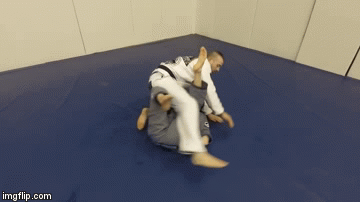
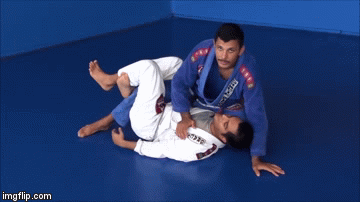
Passing And Counter Attacks
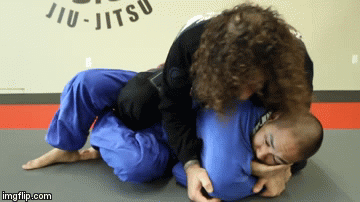
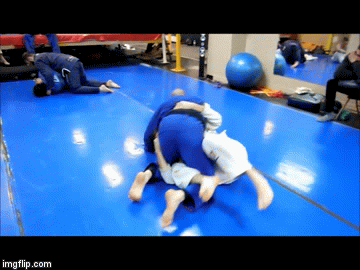
The Best Half Guard Instructionals:
Half Domination by Tom DeBlass
Lucas Leite’s Coyote Half guard
The Battle Tested Half Guard by Bernardo Faria
The Z-Guard Encyclopedia by Craig Jones
High Precision Half Guard and Reverse Half Guard by Jake Mackenzie
High Precision Half Guard by Jake MacKenzie Vol. 2
Related Articles:
Going Deep – A Study Of The Deep Half Guard In BJJ
The Dual Nature Of The Jiu-Jitsu Half Guard
The Great Half Guard Retention Video
High Precision Half Guard 2.0 – Jake Mackenzie DVD Review
Bernardo Faria DVD: The No-Gi Half Guard REVIEW
REVIEW: Craig Jones DVD – The Z Guard Encyclopedia
REVIEW: Battle Tested Half Guard – Bernardo Faria DVD Review
Tom DeBlass Half Domination DVD Review
REVIEW: The Butterfly Half Guard DVD Instructional by Tom DeBlass


![Darce Choke Encyclopedia – Origins, Mechanics and Variations [2025] BJJ, choke, Brabo, BJJ Darce Choke, D'arce Choke, Darce BJJ Choke](https://bjj-world.com/wp-content/uploads/2017/11/JungPoirierLeeYahoo-218x150.jpg)









![[WATCH] John Wick Invitational 2 Delivers Viral Suit-Jitsu Spectacle [WATCH] John Wick Invitational 2 Delivers Viral Suit-Jitsu Spectacle](https://bjj-world.com/wp-content/uploads/2025/04/john-wick-invitational-2-suit-jitsu-spectacle-218x150.png)
![Defensive Wrestling for Jiu-Jitsu Pat Downey DVD Review [2025] Defensive Wrestling for Jiu-Jitsu Pat Downey DVD Review](https://bjj-world.com/wp-content/uploads/2025/04/defensive-wrestling-for-jiu-jitsu-pat-downey-dvd-review-218x150.png)

![Mastering Your Sales Eliot Marshall DVD Review [2025] Mastering Your Sales Eliot Marshall DVD Review](https://bjj-world.com/wp-content/uploads/2025/04/mastering-your-sales-eliot-marshall-dvd-review-218x150.png)

![Modernized Headquarters Passing Shawn Melanson DVD Review [2025] Modernized Headquarters Passing Shawn Melanson DVD Review](https://bjj-world.com/wp-content/uploads/2025/04/headquarters-passing-shawn-melanson-dvd-review-218x150.png)

![Xanadu Back Takes Levi Jones-Leary DVD Review [2025] Xanadu Back Takes Levi Jones-Leary DVD Review](https://bjj-world.com/wp-content/uploads/2025/03/xanadu-back-takes-levi-jones-leary-dvd-review-100x70.png)
![Slay The Wrestle Up Guard Nick Rodriguez DVD Review [2024] Slay The Wrestle Up Guard Nick Rodriguez DVD Review](https://bjj-world.com/wp-content/uploads/2024/12/slay-the-wrestle-up-guard-nick-rodriguez-dvd-review-100x70.png)
![Get Off My Legs Gringo Craig Jones DVD Review [2025] Get Off My Legs Gringo Craig Jones DVD Review](https://bjj-world.com/wp-content/uploads/2025/03/get-off-my-legs-gringo-craig-jones-dvd-review-100x70.png)
![No-Gi Open Guard K-Guard Lachlan Giles DVD Review [2024] No-Gi Open Guard K-Guard Lachlan Giles DVD Review](https://bjj-world.com/wp-content/uploads/2024/12/no-gi-open-guard-k-guard-lachlan-giles-dvd-review-100x70.png)

![Slicin’ Calves Mikey Musumeci DVD Review [2025] Slicin' Calves Mikey Musumeci DVD Review](https://bjj-world.com/wp-content/uploads/2025/04/slicin-calves-mikey-musumeci-dvd-review-100x70.png)

![Collar Sleeve Guard Mikey Musumeci DVD Review [2024] Collar Sleeve Guard Mikey Musumeci DVD Review](https://bjj-world.com/wp-content/uploads/2024/12/collar-sleeve-guard-mikey-musumeci-dvd-review-100x70.png)
![The Stack Pass Andre Galvao DVD Review [2025] The Stack Pass Andre Galvao DVD Review](https://bjj-world.com/wp-content/uploads/2025/01/the-stack-pass-andre-galvao-dvd-review-100x70.png)

![Eoghan O’Flanagan Bundle Down Right Sloppy Jiu-Jitsu Review [2024] Eoghan O'Flanagan Bundle Down Right Sloppy Jiu-Jitsu Review 2024](https://bjj-world.com/wp-content/uploads/2024/09/down-right-sloppy-jiu-jitsu-eoghan-oflanagan-bundle-100x70.png)
![Reverse Arm Bar System Andrew Kerfoot DVD Review [2024] Reverse Arm Bar System Andrew Kerfoot DVD Review](https://bjj-world.com/wp-content/uploads/2024/10/reverse-arm-bar-system-andrew-kerfoot-dvd-review-100x70.png)
![Grappling Takedown Dominance Brandon Ruiz DVD Review [2025] Grappling Takedown Dominance Brandon Ruiz DVD Review](https://bjj-world.com/wp-content/uploads/2025/01/grappling-takedown-dominance-brandon-ruiz-dvd-review-100x70.png)

![Essential Shin To Shin System Shawn Williams DVD Review [2025] Essential Shin To Shin System Shawn Williams DVD Review](https://bjj-world.com/wp-content/uploads/2025/01/shin-to-shin-system-shawn-williams-dvd-review-100x70.png)

![Upper Body Chain Attacks Janine Mocaiber DVD Review [2025] Upper Body Chain Attacks Janine Mocaiber DVD Review](https://bjj-world.com/wp-content/uploads/2025/03/upper-body-chain-attacks-janine-mocaiber-dvd-review-100x70.png)
![Higher Tripod Passing Craig Jones DVD Review [2025] Higher Tripod Passing Craig Jones DVD Review](https://bjj-world.com/wp-content/uploads/2025/02/higher-tripod-passing-craig-jones-dvd-review-100x70.png)
![Spider and Lasso Guard Jared Welman DVD Review [2025] Spider and Lasso Guard Jared Welman DVD Review](https://bjj-world.com/wp-content/uploads/2025/01/spider-and-lasso-guard-jared-welman-dvd-review-100x70.png)

![Assassin Choke Baret Yoshida DVD Review [2024] Assassin Choke Baret Yoshida DVD Review](https://bjj-world.com/wp-content/uploads/2024/10/assassin-choke-baret-yoshida-dvd-review-100x70.png)






![Dima Murovanni Kill The Collar Tie BJJ Trendsetters DVD Review [2024] Dima Murovanni Kill The Collar Tie BJJ Trendsetters DVD Review](https://bjj-world.com/wp-content/uploads/2024/09/dima-murovanni-kill-the-collar-tie-dvd-review-100x70.png)